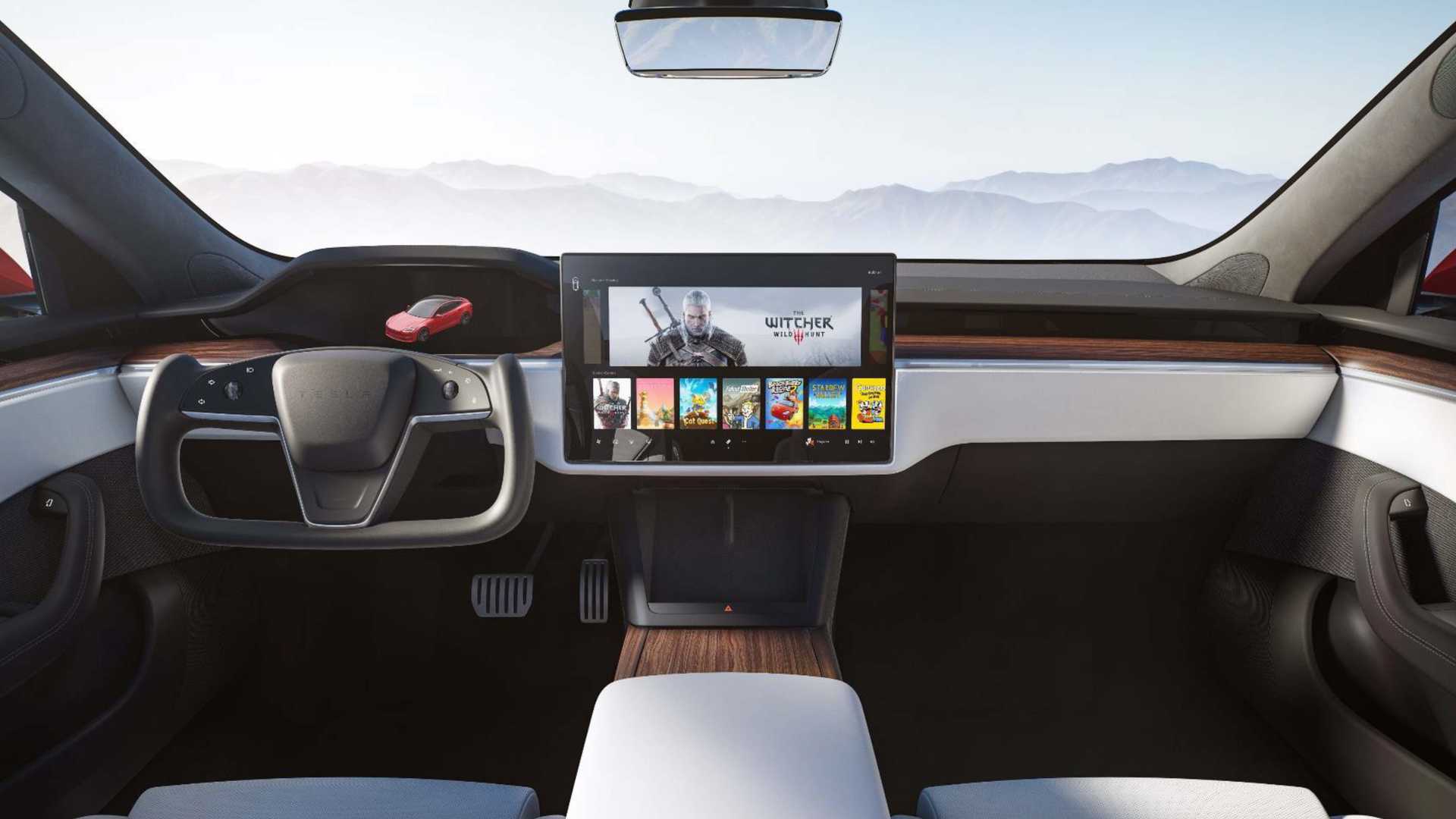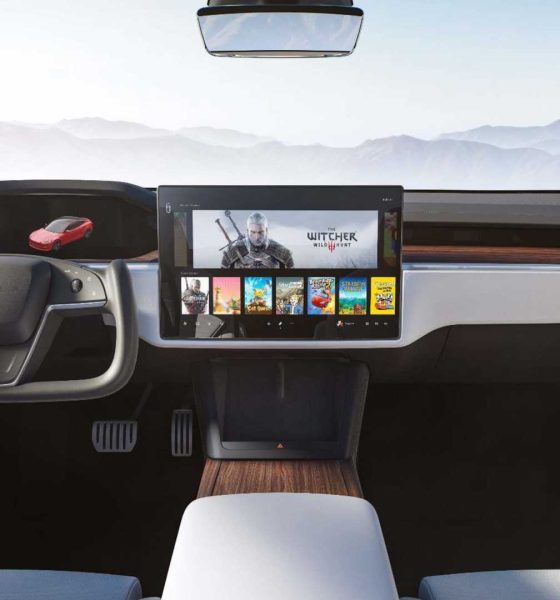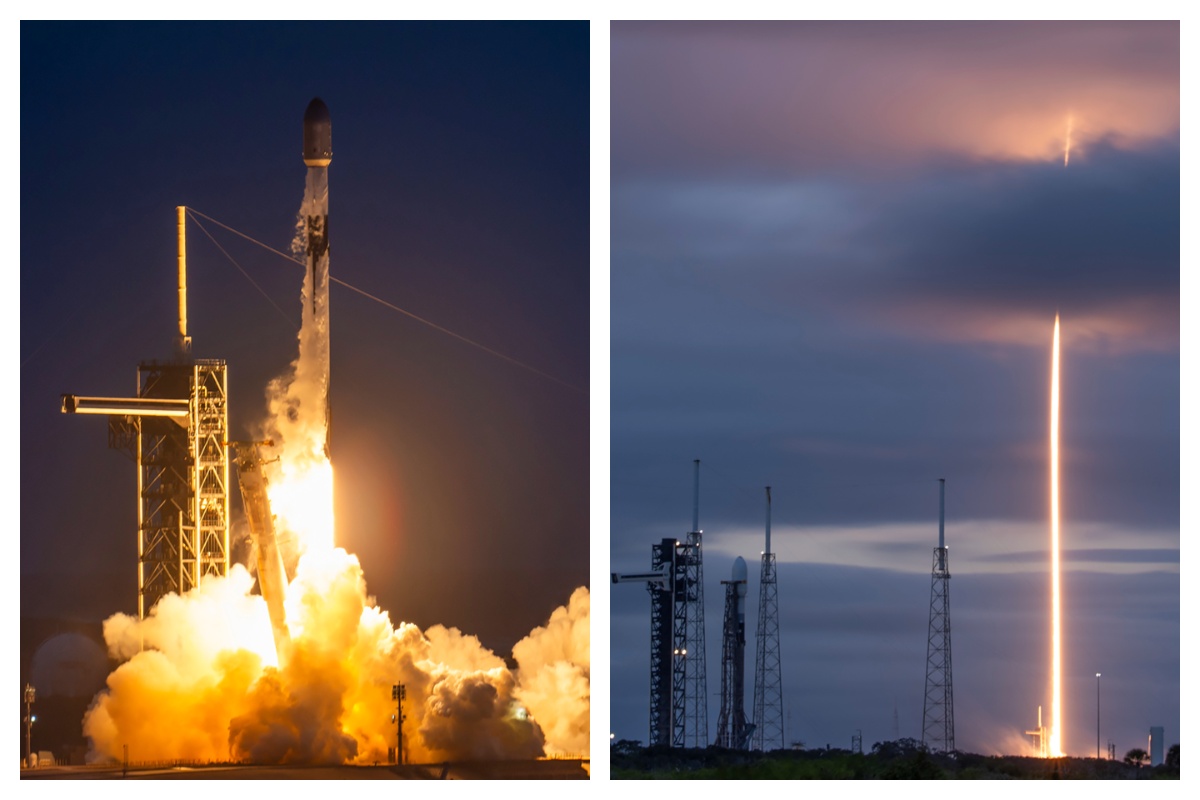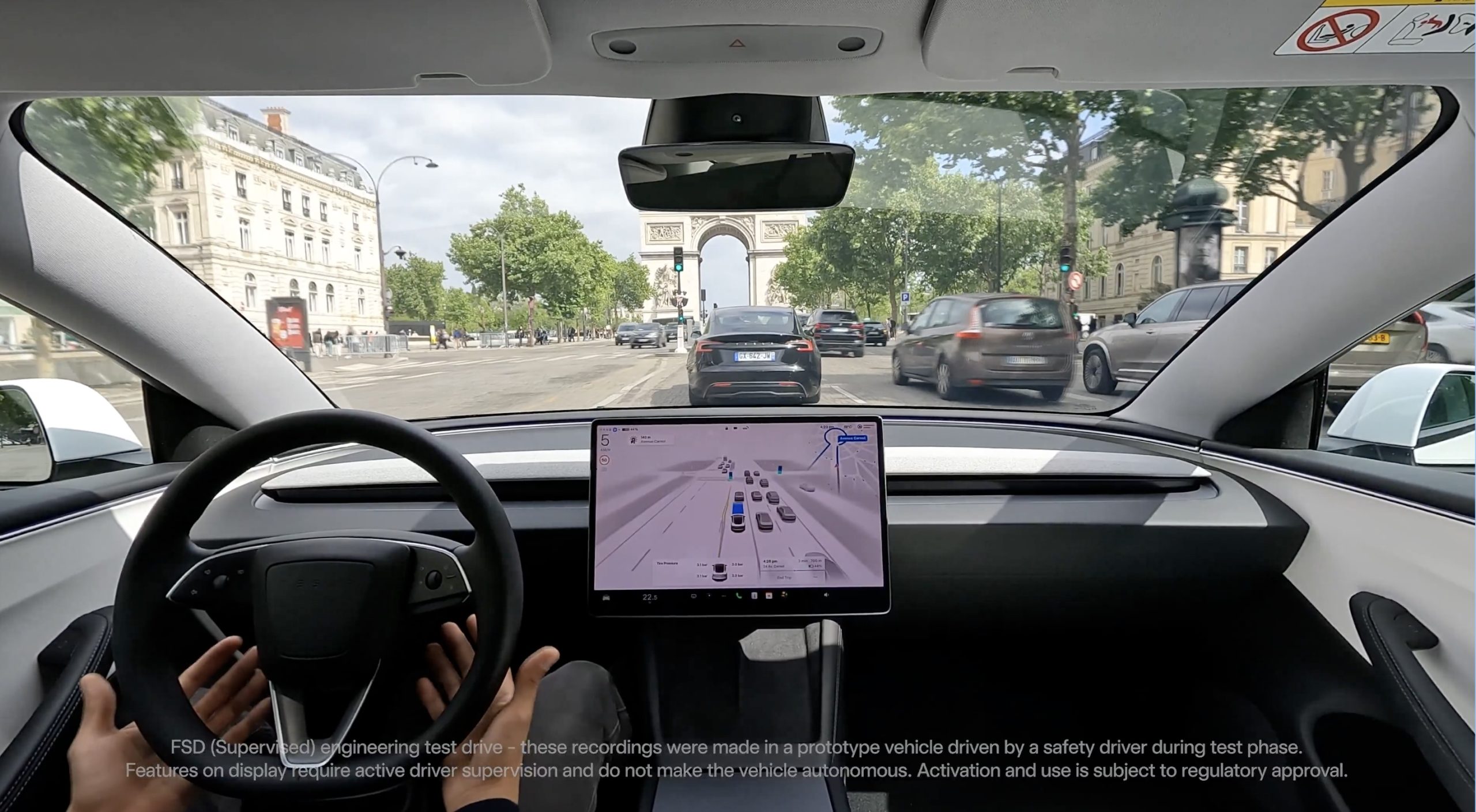

News
Tesla fans call for recall terminology update, but the NHTSA isn’t convinced it’s needed
Tesla fans have been calling for an update in recall terminology ever since Over-the-Air updates became more popular in resolving vehicle issues. However, the NHTSA, the agency responsible for handling recalls and vehicle safety, is not convinced that it is needed.
The majority of Tesla’s vehicle recalls are performed through software remedies, which makes things complicated when it comes to headlines. Far too often, media outlets run with headlines like “Tesla recalls 2 million vehicles for safety issue,” when in reality, the issue is something small and fixable through a software update that downloads and is applied while the owner is asleep.
Fans are not the only ones calling for a terminology update. CEO Elon Musk is calling for one as well and has on several occasions.
‘Outdated & Inaccurate’
After a 2022 “recall” on over 1 million Teslas for a window issue, mainstream media pushed the narrative that 1 million EVs were in need of a major fix. In reality, the problem was remedied through a software download and update, and not a single car needed to go to a service center for repair.
“The terminology is outdated & inaccurate. This is a tiny over-the-air software update. To the best of our knowledge, there have been no injuries,” Musk said in response to the recall.
The terminology is outdated & inaccurate. This is a tiny over-the-air software update. To the best of our knowledge, there have been no injuries.
— Elon Musk (@elonmusk) September 22, 2022
More recently, a 2 million-vehicle recall was initiated by Tesla and the NHTSA to increase font size.
“On affected vehicles, the letter font size of the Brake, Park, and Antilock brake system (ABS) visual warning indicators is smaller than 3.2 mm (1/8 inch), as prescribed in FMVSS Nos. 105 and 135,” the NHTSA said in its 573 Safety Recall Report.
Tesla’s font size causes 2.2 million vehicle ‘recall’ that’s really just an OTA upate
The 2.2 million vehicles affected were given a software update, which was downloaded and applied to all vehicles. It increased the font size without anyone needing to physically take their cars to a showroom.
‘No difference to the safety risk posed by a defect’
From the NHTSA’s perspective, recall still fits the bill of anything from a steering wheel that falls off to the font size being a size too small.
Teslarati reached out to the agency last week, asking if there were any internal plans or discussions regarding the terminology of a recall. In reality, there are more companies than just Tesla that would benefit from an update in terminology.
Ford is another company that has used Over-the-Air updates to solve vehicle problems.
The NHTSA told us that any defect, big or small, fits the bill of a recall, and whether it can be resolved through software or through a physical repair makes no difference. It’s still a safety issue:
“Defects that pose an unreasonable risk to safety are serious and should be remedied as soon as possible. The Vehicle Safety Act requires manufacturers to issue recalls to remedy safety defects. Whether a remedy can be completed at a local dealership or through an over-the-air software update makes no difference to the safety risk posed by a defect.”
Recalls are an acknowledgment of a safety defect in a vehicle, and how they’re repaired does not play into the terminology used. Recalls are important because they alert a vehicle owner of an issue, and sometimes, the OTA update may not be successfully applied, or it could persist after the fix is sent through software.
Comparing Vehicle Recalls to Phone Updates
A common comparison used by people who oppose the use of the word “recall” to describe an OTA update is that of a smartphone update.
iPhones are common recipients of software updates, and you’ll see people online facetiously say, “My iPhone is getting recalled!”
The NHTSA does not see a comparison, considering vehicle safety defects can put lives at risk on the road. The driver is at risk if things are not fixed, and others can be put in harm’s way as well.
Unfortunately, those who disagree with the use of the word “recall” may have to deal with it. It does not seem that the NHTSA has any plans to update the terminology used because the medium of repair is not what a recall applies to. It is the issue itself.
I’d love to hear from you! If you have any comments, concerns, or questions, please email me at joey@teslarati.com. You can also reach me on Twitter @KlenderJoey, or if you have news tips, you can email us at tips@teslarati.com.

News
SpaceX reportedly mulling IPO, eyeing largest of all time: report
“I do want to try to figure out some way for Tesla shareholders to participate in SpaceX. I’ve been giving a lot of thought to how to give people access to SpaceX stock,” Musk said.

SpaceX is reportedly mulling an initial public offering, eyeing what would be the largest valuation at the time of availability of all time, a new report from Bloomberg said on Tuesday.
It is one of many reports involving one of Elon Musk’s companies and a massive market move, as this is not the first time we have seen reports of an IPO by SpaceX. Musk himself has also dispelled other reports in the past of a similar nature, including an xAI funding round.
SpaceX and Musk have yet to comment on the report. In the past, untrue reports were promptly replied to by the CEO; this has not yet gained any response, which is a good sign in terms of credibility.
Musk has discussed a potential IPO for SpaceX in recent months, as the November 6 shareholder meeting, as he commented on the “downsides” of having a public company, like litigation exposure, quarterly reporting pressures, and other inconveniences.
Nevertheless, Musk has also said he wants there to be a way for Tesla shareholders to get in on the action. At the meeting in early November, he said:
“I do want to try to figure out some way for Tesla shareholders to participate in SpaceX. I’ve been giving a lot of thought to how to give people access to SpaceX stock.”
Additionally, he added:
“Maybe at some point., SpaceX should become a public company despite all the downsides of being public.”
Musk has been historically reluctant to take SpaceX public, at times stating it could become a barrier to colonizing Mars. That does not mean it will not happen.
Bloomberg’s report cites multiple unidentified sources who are familiar with the matter. They indicate to the publication that SpaceX wants to go public in mid-to-late 2026, and it wants to raise $30 billion at a valuation of around $1.5 trillion.
This is not the first time SpaceX has discussed an IPO; we reported on it nine years ago. We hope it is true, as the community has spoken for a long time about having access to SpaceX stock. Legendary investor Ron Baron is one of the lucky few to be a SpaceX investor, and said it, along with Tesla, is a “lifetime investment.”
Tesla bull Ron Baron reveals $100M SpaceX investment, sees 3-5x return on TSLA
The primary driver of SpaceX’s value is Starlink, the company’s satellite internet service. Starlink contributes 60-70 percent of SpaceX’s revenue, meaning it is the primary value engine. Launch services, like Falcon 9 contracts, and the development of Starship, also play supporting roles.
News
SpaceX reaches incredible milestone with Starlink program

SpaceX reached an incredible milestone with its Starlink program with a launch last night, as the 3,000th satellite of the year was launched into low Earth orbit.
On Monday, SpaceX also achieved its 32nd flight with a single Falcon 9 rocket from NASA’s Kennedy Space Center.
The mission was Starlink 6-92, and it utilized the Falcon 9 B1067 for the 32nd time this year, the most-used Falcon booster. The flight delivered SpaceX’s 3000th Starlink satellite of the year, a massive achievement.
There were 29 Starlink satellites launched and deployed into LEO during this particular mission:
Falcon 9 launches 29 @Starlink satellites from Florida pic.twitter.com/utKrXjHzPN
— SpaceX (@SpaceX) December 9, 2025
SpaceX has a current goal of certifying its Falcon boosters for 40 missions apiece, according to Spaceflight Now.
The flight was the 350th orbital launch from the nearby SLC-40, and the 3,000 satellites that have been successfully launched this year continue to contribute to the company’s goal of having 12,000 satellites contributing to global internet coverage.
There are over five million users of Starlink, the latest data shows.
Following the launch and stage separation, the Falcon 9 booster completed its mission with a perfect landing on the ‘Just Read the Instructions’ droneship.
The mission was the 575th overall Falcon 9 launch, highlighting SpaceX’s operational tempo, which continues to be accelerated. The company averages two missions per week, and underscores CEO Elon Musk’s vision of a multi-planetary future, where reliable connectivity is crucial for remote work, education, and emergency response.
As Starlink expands and works toward that elusive and crucial 12,000 satellite goal, missions like 6-92 pave the way for innovations in telecommunications and enable more internet access to people across the globe.
With regulatory approvals in over 100 countries and millions of current subscribers, SpaceX continues to democratize space, proving that reusability is not just feasible, but it’s also revolutionary.
News
Tesla expands new Full Self-Driving program in Europe

Tesla expanded its new Full Self-Driving program, which gives people the opportunity to experience the company’s suite, in Europe.
Tesla recently launched an opportunity for Europeans to experience Full Self-Driving, not in their personal vehicles, but through a new ride-along program that initially launched in Italy, France, and Germany back in late November.
People could experience it by booking a reservation with a local Tesla showroom, but timeslots quickly filled up, making it difficult to keep up with demand. Tesla expanded the program and offered some additional times, but it also had its sights set on getting the program out to new markets.
It finally achieved that on December 9, as it launched rides in Denmark and Switzerland, adding the fourth and fifth countries to the program.
Tesla confirmed the arrival of the program to Denmark and Switzerland on X:
Now available in Denmark & Switzerland
🇩🇰 https://t.co/IpCSwHO566 https://t.co/V2N5EarLNX
— Tesla Europe & Middle East (@teslaeurope) December 9, 2025
The program, while a major contributor to Tesla’s butts in seats strategy, is truly another way for the company to leverage its fans in an effort to work through the regulatory hurdles it is facing in Europe.
Tesla has faced significant red tape in the region, and although it has tested the FSD suite and been able to launch this ride-along program, it is still having some tremendous issues convincing regulatory agencies to allow it to give it to customers.
CEO Elon Musk has worked with regulators, but admitted the process has been “insanely painful.”
The most recent development with FSD and its potential use in Europe dealt with the Dutch approval authority, known as the RDW.
Tesla says Europe could finally get FSD in 2026, and Dutch regulator RDW is key
Tesla said it believes some regulations are “outdated and rules-based,” which makes the suite ineligible for use in the European jurisdiction.
The RDW is working with Tesla to gain approval sometime early next year, but there are no guarantees. However, Tesla’s angle with the ride-along program seems to be that if it can push consumers to experience it and have a positive time, it should be easier for it to gain its footing across Europe with regulatory agencies.








